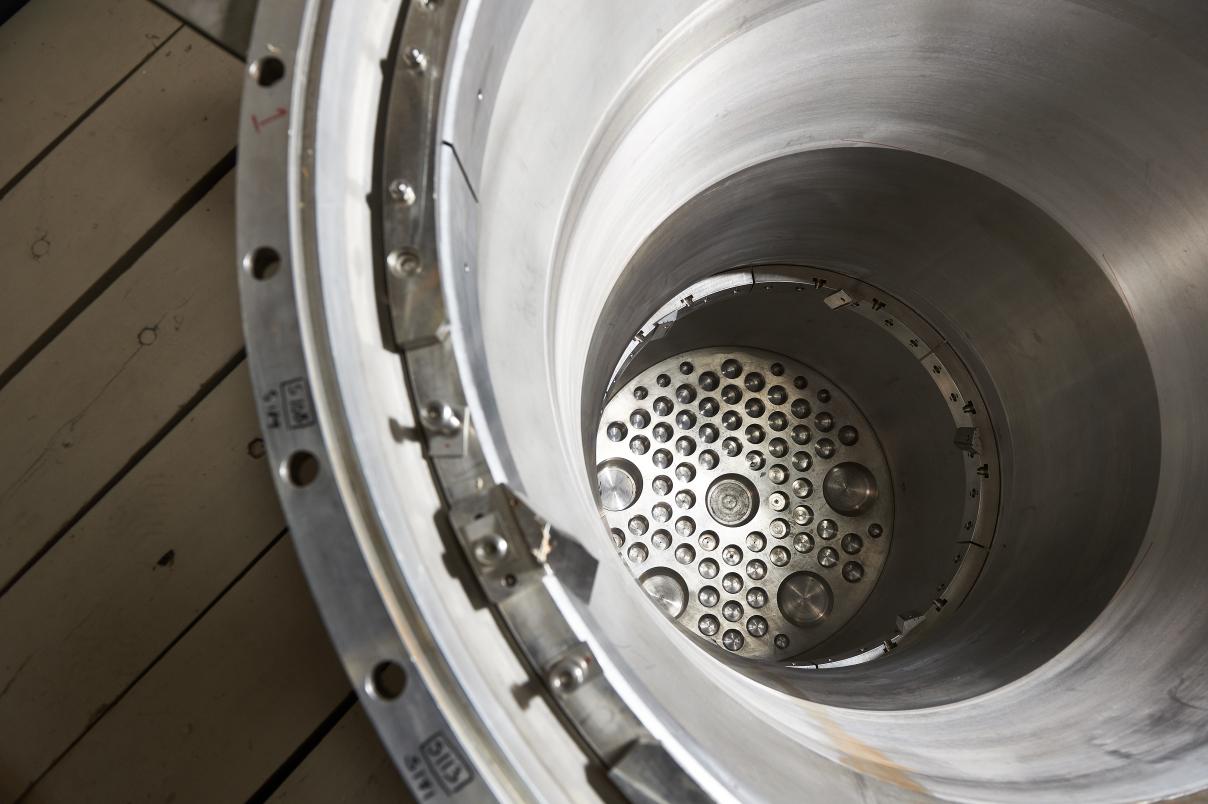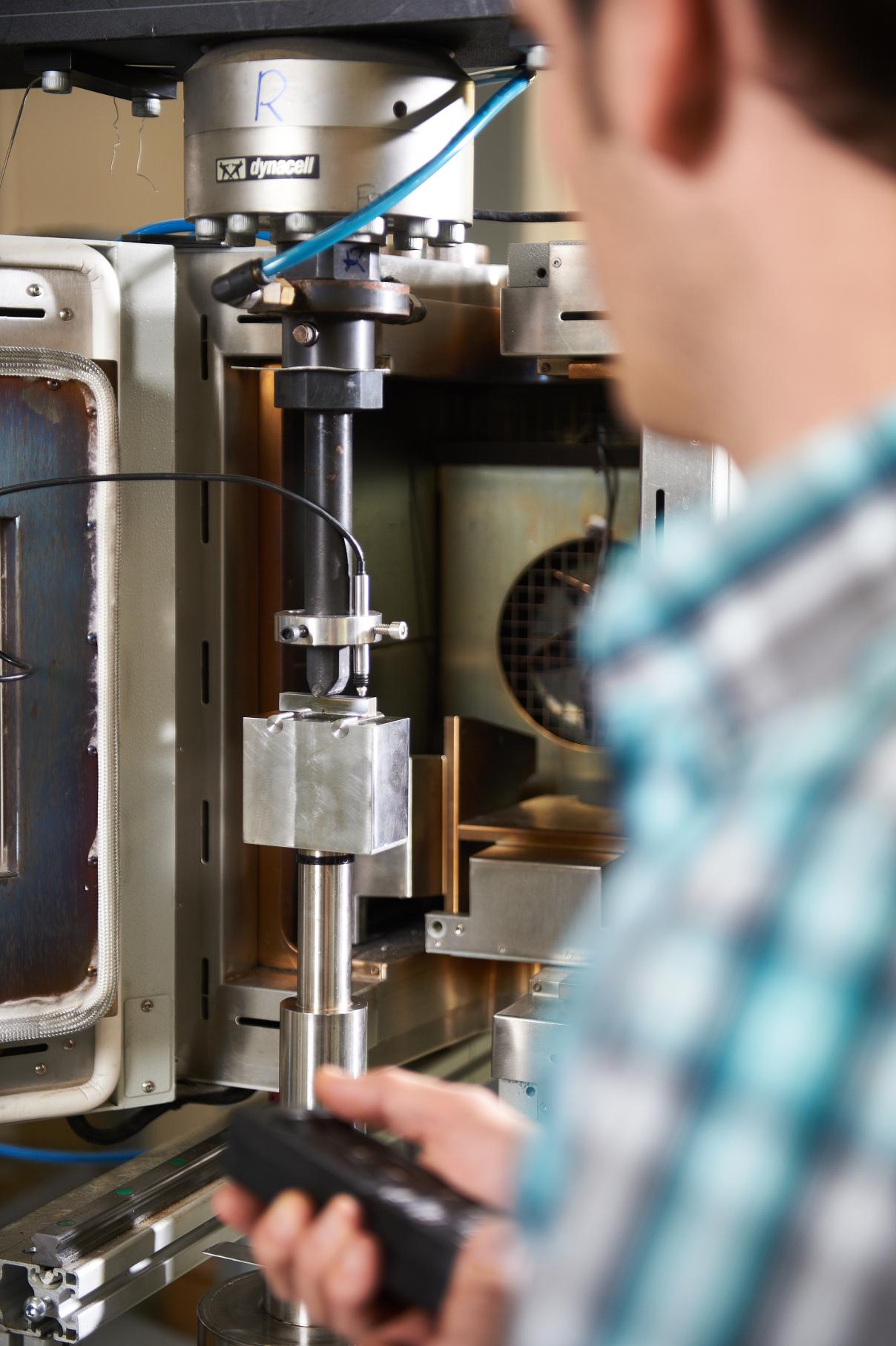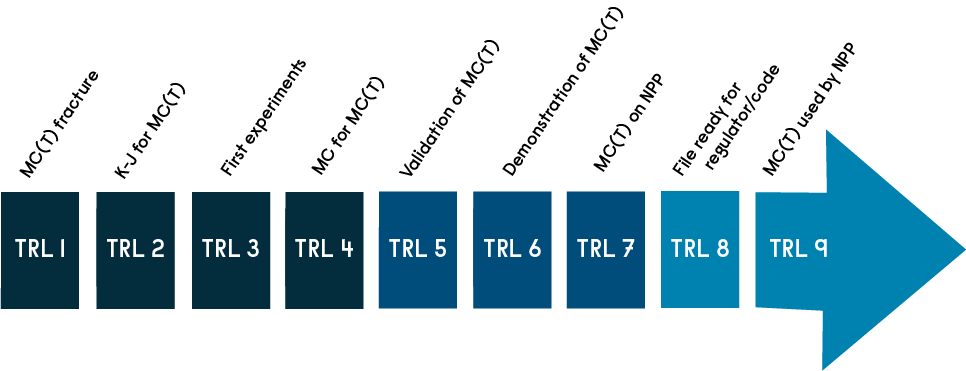Mission statement
FRACTESUS is approved as a project in the EURATOM Work Programme 2019-2020 in the section NFRP-04: Innovation for Generation II and III reactors. The project frames in the overall H2020 program with the aim to continually improve nuclear safety, security and radiation protection, notably contributing to the long-term decarbonisation of the energy system in a safe, efficient and secure way. FRACTESUS also adheres to the three H2020 priorities being Excellent science, Industrial leadership and Societal challenges.
NFRP-04 call expectations
- Aged NPP ‘old’ technology
FRACTESUS
Application to aged (>30 to 40 years of operation) European (and international) nuclear reactor vessels.And more
Relevant also to new reactors and new systems (Gen-4, Fusion)- Comply with increased safety requirements
FRACTESUS
Fracture toughness testing with MC(T) will definitely increase the reliability on the reactor integrity assessment and consequently on safetyAnd more
Provides complementary data that will enhance the confidence in the safety assessment of nuclear components- Implementation of the currently available innovative technology knowledge to the benefit of safety
FRACTESUS
The MC(T) geometry will use innovative technology to characterize fracture properties of structural materialsAnd more
The data that will be generated using this small specimen technology will be complementary to already available data to the benefit of enhanced safety- Contribute to safe operation on EU NPPs within a competitive environment & Supporting increased nuclear safety
FRACTESUS
Direct fracture toughness measurements will definitely reduce uncertainties with respect to regulation.And more
Better assessment of lifetime of nuclear components and increased safety levels- Early involvement of regulators
FRACTESUS
European regulators are involved in the whole development of the FRACTESUS project- European added value
FRACTESUS
State-of-the-art method to assess fracture toughness of nuclear componentsAnd more
Enhanced safety level of EU NPPs

The situation at present in Europe
Most of the nuclear power plants (NPPs) in operation in Europe are in the second part of their operation life and need to comply with increased safety as defined by the Nuclear Safety Directive. In most handbooks on ageing management for Nuclear Power Plants, reactor pressure vessel (RPV) ageing is ranked number one in the list of safety concerns because [1]
- the RPV is the primary barrier against release of radioactive material into the environment,
- failure of the vessel in normal and accidental scenario is excluded by design,
- it cannot be replaced,
it suffers from hardening and toughness degradation in consequence of thermal ageing and radiation exposure.
From the beginning of the Nuclear Program in Europe RPV degradation has been recognized. Therefore, surveillance programs were put in place to monitor embrittlement. These typically used Charpy sized specimens (10 x 10 x 55 mm³) made of representative materials to be irradiated in representative conditions in surveillance capsules. Although Charpy specimen cannot provide a direct measurement of the fracture toughness, this specimen was originally chosen due to practical space limitations and expertise in fracture mechanics in the 1960s. Those surveillance capsules are now practically exhausted with many reactors having no more surveillance material loaded in the reactor, insufficient archive material to extend their surveillance programs and, thus, no capability to forecast long term operation.
Thanks to improved characterization and non-destructive techniques, the presence of local material heterogeneity and small defects in large forging such as reactor cover, reactor vessel, steam generator or pressurizer has been identified. Such issue has led to major concern of the operators and regulatory bodies leading to very long outage of existing NPP or serious delay in NPP construction [2] [3]. To address the issue of local material properties, the use of accepted small size specimen is essential. [4] [5]

To address those questions and concerns, the consortium proposes an innovative approach using small sized specimens to measure fracture toughness directly. The reference small specimen is the miniature Compact Tension specimen (10 x 10 x 4 mm³) allowing up to eight specimens to be machined from a single broken Charpy specimen. This approach intends to drastically increase the safety level through:
- direct fracture toughness evaluation rather than a semi empirical approach based on Charpy measurements,
- dramatically increasing the surveillance database allowing an increased confidence in the data.
- characterization of local material properties in case of material inhomogeneities.
This innovative approach also addresses the requirements for decarbonization, security of energy supply and increased competitiveness of the European nuclear Energy through cost-effective long-term operation. The long term operation of NPP becomes possible if it can be supported by extended surveillance programs.
The development of such programs, incorporating previously-irradiated and broken Charpy specimens in the surveillance capsules, provides high returns on investment. The broken Charpy specimen material will be used to interrogate vessel embrittlement using miniature Compact Tension specimens. Long term operation of NPP allows the retention of a secure energy supply while maintaining low carbon emissions.
This project will also benefit to Gen III+ and future nuclear systems. Structural materials in future nuclear systems and, in particular, Gen IV and fusion systems will need to cope with harsh irradiation conditions. Qualification programs provide a major constraint in the deployment of new materials and technologies. Such qualification programs need to be performed in dedicated irradiation machines (Materials test reactors, or accelerator based irradiation devices e.g. MINERVA, MYRRHA, DONES) and be fully representative of defined operational conditions windows. The irradiation space in such devices is generally limited so qualification programs can largely benefit from this project.
As this is an innovative project, success can only be achieved if the consortium is also addressing the acceptance aspect and inevitable resistance to change. In conformance with the work program, the project foresees an early involvement of the regulators, but will also work on building acceptance on different fronts including standardization and code committees, technical support organizations and operators and encouraging international involvement.

The Technology Readiness Levels (TRL) of a project can be classified according to nine levels. As illustrated in the image on the right, small specimen fracture toughness testing has already achieved levels 1 to 4, whereby Miniature Compact Tension (MC(T)) specimens have been shown to break in the brittle and ductile modes depending on the test temperature, first experiments were performed, and the results were found to follow the Master curve concept and ductile tearing theory [6] [7] [8] [9] [10]. This project builds upon that basis. The core of this project intends to take the technology from TRL5, addressing validation, then demonstration in an industrially relevant environment up to TRL7, demonstration on actual irradiated reactor pressure vessel from actual Nuclear Power Plants. This project will produce a comprehensive file ready for regulators and codification bodies in preparation of the step to TRL8, which will facilitate the required step change in the way surveillance programs are conducted and allow MC(T) to be used by NPP operators.
[1] Aging and Life Extension of Major Light Water Reactor Components 1st Edition V.N. Shah P.E. MacDonald (1993).
[2] ASN press release L’ASN présente sa position sur l’anomalie de la cuve du réacteur EPR de Flamanville L’ASN présente sa position sur l’anomalie de la cuve du réacteur EPR de Flamanville.
[3] ASN press release Anomalie de la concentration en carbone de l’acier : après contrôle, l’ASN a autorisé les réacteurs concernés à redémarrer 13/03/2017.
[4] www.ensi.ch. Assessment of the safety case for the reactor pressure vessel of the Beznau unit 1 nuclea power plant (2018).
[5] R. Gérard et al., Materials properties of reactor pressure vessel shells affected by hydrogen flaking, PVP2016-63901 (2016).
[6] Yamamoto, M., Kimura, A., Onizawa, K., Yoshimoto, K., Ogawa, T., Mabuchi, Viehrig, H-W., Miura, N., Soneda, N., “A Round Robin Program of Master Curve Evaluation using Miniature C(T) Specimens - 3rd report: Comparison of To under Various Selections of Temperature Conditions”, procs., ASME 2014 Pressure Vessel and Piping Division Conference, PVP2014-28898, (2014).
[7] Yamamoto, M., "The Master Curve Fracture Toughness Evaluation of Irradiated Plate Material JRQ Using Miniature-C(T) Specimens", Proceedings of the ASME 2017 Pressure Vessels and Piping Conference, Volume 1A: Codes and Standards, Waikoloa, Hawaii, USA. July 16–20, 2017. V01AT01A071. ASME. DOI: https://doi.org/10.1115/PVP2017-66085).
[8] Server, William, Sokolov, Mikhail, Yamamoto, Masato, and Carter, Robert. "Inter-Laboratory Results and Analyses of Mini-C(T) Specimen Testing of an Irradiated Linde 80 Weld Metal." Proceedings of the ASME 2018 Pressure Vessels and Piping Conference. Volume 1A: Codes and Standards. Prague, Czech Republic. July 15–20, 2018. V01AT01A073. ASME. DOI: https://doi.org/10.1115/PVP2018-84950).
[9] R. Chaouadi et al., On the use of miniaturized CT specimens for fracture toughness characterization of RPV materials, PVP2016-63607 (2016).
[10] R. Chaouadi et al., Crack resistance curve measurement with miniaturized CT specimen, PVP2019-84690 (2018).
